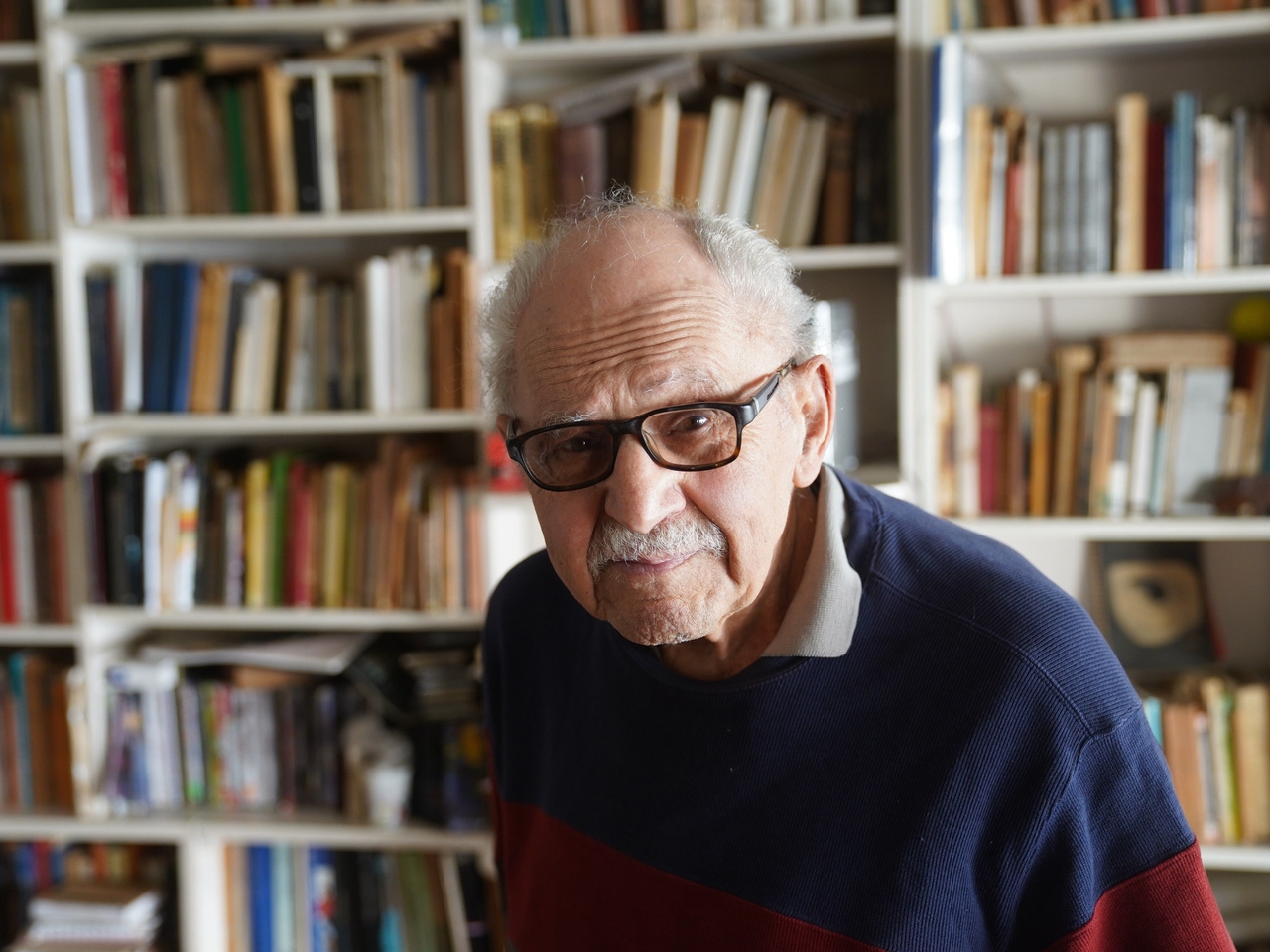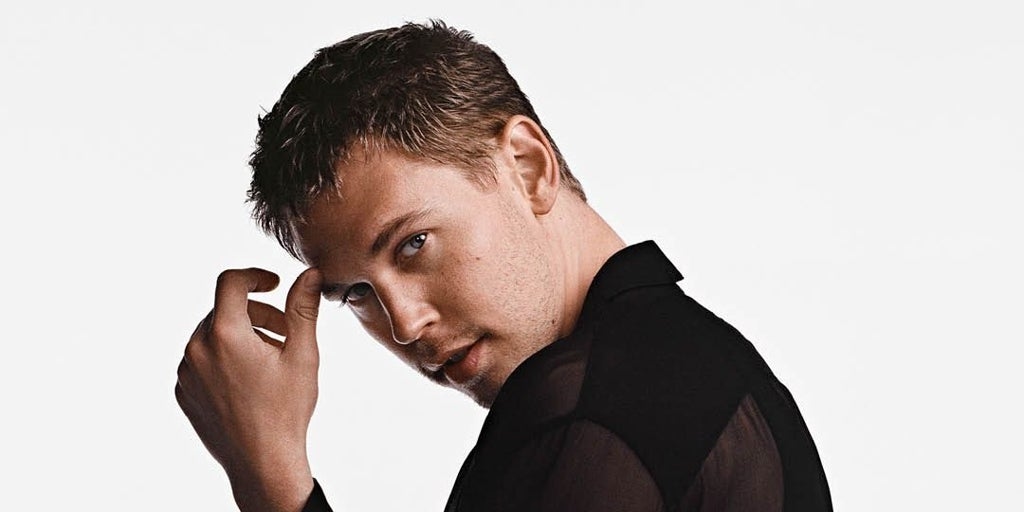Daniel Canogar: the art of getting your hands dirty with digital garbage

When the Prado Museum celebrated its bicentenary in 2019, the Spanish artist Daniel Canogar , commissioned by the institution, requested images of all the works in the collection and created an algorithm that melted them. Inspired by Zygmunt Bauman's "liquid society," he projected a fluid cascade of art history onto the museum's façade for four consecutive nights, a cascade so fluid it could even mistake a Goya for a Velázquez .
 Daniel Canogar at the Andreani Foundation: "Technology has done and continues to do a lot of damage, but it can also help us to gauge the impact that we humans are having on the planet."
Daniel Canogar at the Andreani Foundation: "Technology has done and continues to do a lot of damage, but it can also help us to gauge the impact that we humans are having on the planet."She did something similar for the Aurora Biennial in 2024. She projected a hypnotic virtual piece onto Dallas City Hall that mimicked the silky way textiles draped and stretched. The intriguing aspect was that it was composed of news headlines being broadcast live at that moment by channels such as CNN, Fox News, BBC News, Al Jazeera, and Le Monde . The headlines traced a moving image, one that progressed rapidly and erratically, never the same . In this way, she created a metaphor for the endless information overload of our times, the interminable scrolling that platforms offer users. This, she suggests, is “the cause of an epistemological crisis, one of a gravity and with social and political consequences that we are still trying to understand.”
As part of the Presente Continuo program, the Spanish artist arrived in Buenos Aires, a city he considers “brutally creative.” He gave a series of lectures and workshops at the Andreani Foundation, the CCEBA (Centro Cultural de la Cultura Económica de Buenos Aires), and the Cazadores Foundation , and spoke with Ñ about his work processes. He developed ideas such as the importance of “getting your hands dirty with digital garbage to reflect on its impact from within.” Presente Continuo is a program—organized by the Bunge y Born Foundation and the Williams Foundation—that has established itself as a space for training, research, and the production of works, ideas, descriptions, and narratives. Twenty-four artists, thinkers, curators, researchers in the exact sciences, social sciences, and humanities, scientists, and technologists from across the country participate in the program.
 Daniel Canogar's animations trace a dialogue between the analog past and the digital present.
Daniel Canogar's animations trace a dialogue between the analog past and the digital present.Canogar is an artist whose work has evolved alongside the constant technological transformation of recent decades, without losing its identity or poetic essence. From his early use of discarded technology, such as CDs and VHS tapes, through digital media, LEDs, and now AI, his work allows us to revisit, from a critical and poetic perspective, the various media, formats, and devices that marked the transition from analog to digital.
“There’s a problem of information overload, of being overwhelmed by the sheer volume of information available, and a society that doesn’t process its current state becomes ill, even psychotic,” he asserts. “I think the art world is turning its back on the garbage . It’s important that there are artists who metaphorically get their hands dirty with technological remnants. Because it’s a way of responding with knowledge. Everyone has opinions about AI, but few people understand how it works . We need to digest the changes happening around us, reflect on them, and engage with them. I feel the need to do this to better understand a reality that overwhelms and confuses me.”
He began as a photographer and then turned to technological installation art. He has created works in diverse public spaces, ranging from a panoptic prison in Montevideo to the LED screens of Times Square, as well as biennials and major museums around the world . “When I was 14, I discovered the darkroom and felt something very close to magic. Technology has that very mysterious and fascinating element, that an image can appear on paper. With a few chips and some wires, you can create something that comes to life,” he emphasizes.
 Daniel Canogar at the Andreani Foundation, invited by Presente Continuo.
Daniel Canogar at the Andreani Foundation, invited by Presente Continuo.Through obsolete or discarded technologies, such as VHS tapes, hard drives, CDs, printers and old telephones that he acquires in markets and recycling centers, his animations trace a dialogue between the analog past and the digital present ; which places the electronic consumer object as a repository of memories to investigate memory and identity.
“I found in the waste, besides a very cheap material, a lot about culture: it’s marked by what people throw away,” he emphasizes. His Small Data series was something like a “museum of technological obsolescence,” he says, with sculptural works made from remote controls, pieces of keyboards, calculators, more than two thousand DVDs found in the trash, and old, nearly extinct cell phone models . He projected animations onto them, bringing them back to life while prompting reflections on how, ever more rapidly, one technology is abandoned for another. “Accelerated technological obsolescence condemns the collective memories locked within these technologies to oblivion. But without them, we cease to be who we are.”
 Daniel Canogar: “I think the art world turns its back on trash.”
Daniel Canogar: “I think the art world turns its back on trash.”Regarding the implications of technological art on the environment , he emphasized that “there is an ongoing effort to raise awareness and develop engineering solutions to try to find alternatives. Technology has done and continues to do a lot of damage, but it can also help us gauge the impact we humans are having on the planet . Technological works consume a lot of energy, and in that sense, I'm reassured that 80% of the energy in Spain is renewable, which is where I primarily create public works. But I'm interested in 'contaminating' the art world, that artistic bubble that I sometimes use myself to protect myself from the world. Because sometimes we use art to negotiate with reality and turn our backs on the garbage. We should use it to see.”
Receive all the news, coverage, stories and analysis from our specialized journalists directly to your email.
I WANT TO RECEIVE IT
Clarin





